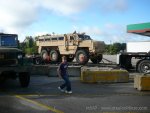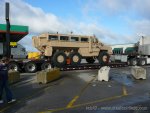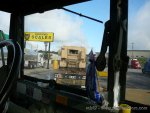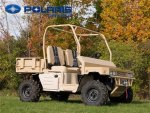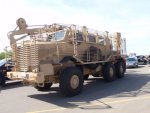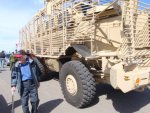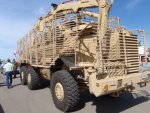I figured I'd split my posts to make them easier to read. What impresses me most about the MRAPs is how quickly they were developed & deployed to our troops. I served as a Marine tank crewman from 1985-92, and even during Desert Shield/Desert Storm we did not see the gear we really needed until well after we needed it. Luckily, we had added the applique armor packages to our M60A1 tanks a couple of years prior (1987-88 as I remember), but even that was a stop-gap measure at the time. And yes, we took these old beasts into clean-up duty behind the main advance into Kuwait, and I was discharged before getting the pleasure of being trained on the M1A1.
The Buffalo design was inspired by the OMC (Olifant Manufacturing Company, South Africa) CASSPIR mine-protected vehicle, which is pronounced "CASPER" like the cartoon ghost. If you've seen the movie "District 9" then you've seen the 4x4 version Casspir painted in the white MNU scheme.
The origins of the mine-protected vehicles are actually not even South African, even though they get most of the recent credit. The Casspir, Meerkat, RG31 and other designs were actually Rhodesian in origin. The Rhodesians designed and built very simple but effective MPVs to protect their troops against Russian and Chinese land mines laid by communist guerillas during their Bush Wars from 1967-1980 (ZIPRA in the north, based in Zambia; ZANLA in the south & east, based in Mozambique). Most were initially steel armored bodies mounted on commercial & military truck chassis, later they were entirely proprietary from the ground up. Unimogs were a popular base for armored body bolt-ons, especially with the Selous Scouts for their cross-border raids.
After the end of the war in 1980, many of these designs were packed up & moved with their builders to South Africa, to escape the coming reign of terror & exploitation by newly "elected" Zimbabwean president robert mugabe (still in power today). One of the first things he did as president was change the country's name from Rhodesia (in honor of founding colonist Cecil Rhodes) to Zimbabwe. After 1980, South Africa's "Bush Wars" heated up and the South African Defense Forces (SADF) found an immediate need for MPVs. The original Rhodesian designs were adapted, tweaked, refined and whatnot for use throughout southern Africa by the SADF. The RG31 & Casspir were extremely rugged, reliable, and effective designs that featured the V-shaped hull to deflect land mine blasts.
When the IEDs were first employed en-masse in Iraq against our troops, I lobbied long & hard to my congressmen to quickly acquire manufacturing licenses & rights for the RG31 & Casspir designs, and get them out to our troops as quickly as possible; meanwhile, more effective solutions could be researched. I don't know that my efforts had any effect, but it was relieving to see the military able to quickly respond & deploy MRAPs in large numbers.
I know many of the designs are not completely effective, especially against very large IEDs and some EFPs, but they are a HUGE step in the right direction...in the past, it would have taken 10-20 years to fully research, design, test, fund, and deploy a small number of MRAPs, as these vehicles have radically changed the thinking & tactics of the bean-counters and armchair warriors...you know, the ones who have all the say but take none of the risks.
God Bless our troops: veterans, currently serving, and future warriors! And THANK YOU to all who are serving & have served in the War On Terror; your hard work & sacrifices have kept this country safe since 9/11, and are deeply appreciated by a grateful nation.



